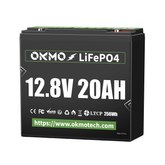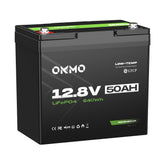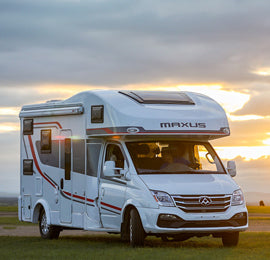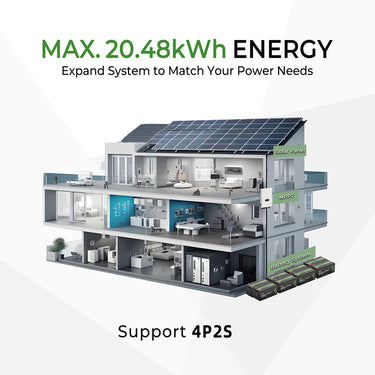Three Overlooked Issues in Home Energy Storage
 Subtitle: How to Avoid Common Pitfalls and Keep Your Energy Storage System Running Efficiently
Subtitle: How to Avoid Common Pitfalls and Keep Your Energy Storage System Running EfficientlyIntroduction.
Home energy storage systems are an important option for many households to achieve energy independence and lower electricity bills. However, many people overlook key issues during installation and use, resulting in inefficient or even damaged systems. This article will look at three major issues in home energy storage that should not be overlooked and provide practical advice to help you avoid these pitfalls.
Problem 1: Mismatch between battery capacity and household electricity demand
Problem Description
When choosing an energy storage battery, many families only focus on price, but neglect to match the battery capacity with the family's actual electricity needs. If the battery capacity is too small, it may not be able to support the family's daily electricity consumption; if the capacity is too large, not only is it a waste of money, but it will also take up more space.
Solutions
Calculate household electricity consumption: Check your electricity bill or use a smart socket monitoring tool to record your household's daily electricity consumption (unit: kWh). For example, the average daily electricity consumption of a family of three is about 20-30kWh.
Matching Battery Capacity: Select the appropriate battery capacity according to the electricity consumption. For example, a family with an average daily electricity consumption of 30kWh can choose a 30kWh energy storage battery. If matched with solar panels, the battery capacity can be appropriately reduced.
Reserve space for expansion: If you plan to add high power consumption equipment such as electric vehicle charging piles in the future, it is recommended that you choose an expandable modular battery system.
Problem 2: Battery life is drastically shortened by improper maintenance
Problem Description
Battery life is the core indicator of a home energy storage system, but many users neglect maintenance resulting in premature aging of the battery. For example, frequent deep discharging or long-term high-temperature environment will accelerate battery depletion.
The Solution
Choose long-life batteries: Prioritize LiFePO4 batteries (Lithium Iron Phosphate), which have a lifespan of more than 10 years, far exceeding that of traditional lead-acid batteries.
Control Depth of Discharge: Avoid depleting the battery, it is recommended that the Depth of Discharge (DoD) be controlled within 80%. For example, the actual usable capacity of a 30kWh battery is 24kWh.
Maintain a suitable environment: Install the battery in a cool and dry place, avoid direct sunlight or humid environment.
Use an intelligent management system: Equipped with a Battery Management System (BMS) that monitors temperature, voltage and current in real time to prevent over-charging or over-discharging.
Problem 3: Poor compatibility between solar system and battery
Problem Description
Some households do not fully consider the compatibility between solar panels and batteries when installing energy storage systems, resulting in inefficient power generation or conflicting equipment. For example, a mismatched inverter may not be able to store solar power efficiently into the battery.
The Solution
Choose compatible equipment: Ensure that the battery is matched with the solar inverter and controller. For example, 24V LiFePO4 batteries are usually compatible with mainstream brand inverters (e.g. Victron, Renogy).
Optimize system configuration:
Solar panel power: Each 1kW solar panel generates about 4-5kWh of electricity per day (based on 4 hours of effective light).
Battery capacity ratio: the recommended ratio of solar panel power to battery capacity is 1:2. e.g. 5kW solar panels with 10kWh batteries.
Utilize smart distribution: Through the energy management system, solar power is prioritized to be used for high power consuming devices (e.g. air conditioners) and the remaining power is deposited into the battery.
Practical Tips: 3 ways to maximize the value of your energy storage system
Time-sharing strategy: Save money by using the grid for charging during low-priced hours (e.g., at night) and using the battery for power during peak hours.
Equipment energy efficiency upgrades: Replace older appliances with energy efficient models. For example, a Grade 1 energy-efficient air conditioner saves 30% more electricity than a Grade 3 energy-efficient one.
Regular performance testing: Check battery health and clean solar panel dust quarterly to ensure efficient system operation.
Recommended products: If you're looking for a high-performance home energy storage battery, OKMO's 24V 100Ah LiFePO4 battery is a reliable choice - with its 100% deep-discharge capability and 5-year warranty, you won't have to worry about a thing.
A home energy storage system is a critical step toward energy independence, but ignoring the three major issues mentioned above can lead to wasted costs or system failure. By planning your capacity wisely, maintaining your batteries scientifically, and optimizing solar compatibility, you'll have an efficient, long-lasting home energy solution.
Extended reading: Want to learn how to match solar panels and batteries? Click here to view The Complete Guide to Configuring Your Home Solar System.









